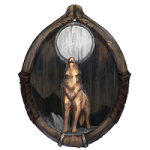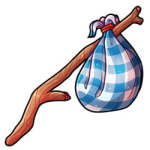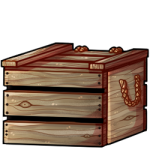Tokopedia
Go to Search
Bonding Guide
Requirements | Prompts | Traits | Rewards | FAQ
Although Tokotas are a large and fierce predator, most are naturally pack animals and instinctively develop close bonds to other Tokotas in the wild. It has even been recorded, although rare, that a wild Tokota can form close symbiotic relationships with other creatures. These relationships or partnerships can grow extremely strong and last a lifetime.
The TCA offers a special certification for bonding! Please look over the requirements, below to find out how you can maximize your bond with this unique species!
Each submission should include the following form:
Tokota has a chance to roll Average Pups in Breedings that don't normally get Average Pups.
Tokota receives additional +1 HP when depicted with a Handler and/or Starter.
When depicted in a Taming this Tokota counts as up to 3 Treats. (Does stack with Totems, does not stack with other Bakers, and only works for the Owner)
Removes chance at Severe Injuries from all injury rolls. This affects all injury types. Stacks with Hardy/Porcupine/Porcupine Totem.
Allows Tokota to find Abandoned Supplies while Fishing, Hunting, and Exploring. (Does not work in Tribe Activities)
Abandoned Supplies may be found in basic activities (hunting, fishing, exploring). They open and allow you to pick two of the following: Basic Rod, Basic Bow, Dull Flashlight, Snorkel, Rope or x5 HP Tokens.
Judged overall (the completed set of all 3 prompts):
Although Tokotas are a large and fierce predator, most are naturally pack animals and instinctively develop close bonds to other Tokotas in the wild. It has even been recorded, although rare, that a wild Tokota can form close symbiotic relationships with other creatures. These relationships or partnerships can grow extremely strong and last a lifetime.
The TCA offers a special certification for bonding! Please look over the requirements, below to find out how you can maximize your bond with this unique species!
Requirements
General
- All work should be your own. It cannot be commissioned! Collaborations with one other person (2 collaborators max) is acceptable. Each person's parts must be clearly labeled.
- Prompts may be chosen from the general and appropriate build sections.
- A bonding set may only include one Tokota being bonded at a time. If collaborated, two Tokotas may be bonded in a single set of rites.
- For bonding, Tokotas require a handler. Starters may not substitute handlers. This certification is meant to encourage the development of a bond between your Tokotas and their handlers, so using Starters would not make sense!
- A Tokota with the Packmate Unique Trait may be used instead of a handler.
- Choose only three of the available prompts to complete and submit on the Bonding form/journal.
- Those who have achieved Rank 5 in TCA Taming Academy only need to complete two prompts to complete their bonding.
Art
Universal Art Requirements
- Image must be at minimum 300x300 pixels to be valid. Pixel art may be scaled up to meet these requirements.
- Images must be relatively clean and may not look sketchy and unfinished. All art will be judged against your own gallery standards.
- Tokota(s) must be depicted as full body (75% visible) in order for entry to be valid.
- Where required, Handlers, Starters, or Lore Figures must be depicted as half body (50% visible).
- When required, prey animals must have at least 25% visibility to be valid.
- A semi-complex background is required, following requirements in the Activities Visual Guide. Large open spaces should be colored, textured, shaded, or broken up by other shapes and elements. Generally you must have 3-4 unique elements for your background.
- At least 50% of depicted Tokotas, handlers, prey, etc. must be on the background, not in transparent or white space.
- Images must be colored and all depicted Tokotas must have identifiable markings.
- Greyscale, Monochromatic, and Color Palette themed images are permitted. They are held to the above rules where all Tokotas must be identifiable with easily discernible markings.
- Shading is optional and not required.
- All art must be your own original work, adhere to rules laid out in the Group Rulebook and may not be re-used in multiple parts of the Tokotas group.
- Tracing other artists' work, using bases, presets, premade 3D models, or AI (Artificial Intelligence) Generated Art is prohibited in all aspects of the Tokotas Group. You may not use it for any submission, as whole or part of an image.
- You may have your images take place off Tokotna, and in fantastic settings. Tokotas may have your own personal lore which does not match that of the group. They must always be depicted as Tokotas, however, not real or fictional creatures of any other kind.
- Tokotas with the Shapeshifter Unique Trait may use their Registered Shapeshifter Form. If you are using the alternate form, its official reference must be linked on the appropriate form.
Triptych Image Requirements
Triptych/Multi-Image submissions are acceptable provided they follow the below criteria:- Must be composed of distinct images with clear dividers between panels. A standard comic page would not qualify.
- Each of panel must individually meet the art requirements listed above, including background elements, Tokota visibility, etc.
- Prompts must be clearly labeled in submission description. (Ex. Left = Prompt #3, Center = Prompt #9, Right = Prompt #11)
- Rite bonuses must be drawn per panel to count more than once.
- HP bonuses must be drawn per panel to count more than once.
- If adding a short story for the bonus this must be split up between the images (500 words per panel)
Bonding Specific Requirements
- None
Literature
Universal Literature Requirements
- Literature entry must be at least 1200 words.
- Entry should be focused on and relevant to the activity or prompt, with a clear beginning and end.
- Tokota(s) must be present consistently through the entry. Generally a Tokota must be mentioned at least 6-7 times.
- Where required, Handlers, Starters, or Lore Figures must also be present throughout entry with similar requirements to the above.
- Entry should not be padded with overly excessive repetition of names, descriptions, etc.
- All literature must be your own original work, adhere to rules laid out in the Group Rulebook and may not be re-used in multiple parts of the Tokotas group.
- Plagiarizing other writers’ work or AI (Artificial Intelligence) Generated Literature is prohibited in all aspects of the Tokotas Group. You may not use it for any submission, as whole or part of an image.
- You may have your stories take place off Tokotna, and in fantastic settings. Tokotas may have your own personal lore which does not match that of the group. They must always be depicted as Tokotas, however, not real or fictional creatures of any other kind.
- Tokotas with the Shapeshifter Unique Trait may use their Registered Shapeshifter Form. If you are using the alternate form, its official reference must be linked on the appropriate form.
Bonding Specific Requirements
- None
Prompts
The TCA is very tight-lipped about this mysterious certification. Only those who have acquired a Tokota, via purchase, breeding, or wild-tamed (import) can begin these dangerous, life-altering tasks. If you think you've got what it takes to earn a Bonded Certificate, complete three of the following tasks of your choice to prove your mettle!Each submission should include the following form:
Handler name:
Tokota Import: [LINK]
Prompt:
General Bonding Prompts
- Bonding and training a Tokota is indeed a tiring and time-consuming process. Depict your handler resting with the Tokota after a hard day of work. Will they keep each other company or keep their distances?
- The first meeting between you and your Tokota is an important event. What happened during that event? did it go smoothly or did it end in total disaster?
- How better to get to know each other than spending time alone together surviving off the land? Depict your Tokota spending time with their handler in the wilderness with few supplies.
- Tokotas are known to be smart creatures who can help with many medical needs, but they, like other animals need training. Depict your handler training their Tokota how to act as a service or Emotional Support Tokota.
- Your Tokota and their handler are having a disagreement. Depict the pair coming to a solution to their argument.
- Your handler was injured on a hunting trip with your Tokota. What does your Tokota do?
- Tokotas can be a handful when it comes to maintenance especially when they are not used to any sort of tool or item used by humans. Depict your handler attempting to groom their Tokota.
- Part of living with a breeder means living in harmony with many other Tokotas, and particularly, young puppies. Depict your handler socializing their young Tokotas with other Tokota puppies.
- New environments are scary for wild animals. Depict your handler taking their Tokota to a new environment, whether it's a farm, city, beach, etc. and how they comfort and reassure their Tokota.
- Tokotas have a strong prey drive, which even with diligent training is hard for them to overcome. Depict your handler working with their Tokota to avoid fights with pets, live stock, or other Tokotas.
- Not every Tokota is fond of harnesses or protective gear when going on adventures. Depict your handler helping their Tokota get used to a harness, saddle, or leg protectors.
- Long trips are a necessity when you are working with a show animal. Tokotas and their handlers travel all over Tokotna to compete in rites, events, and more. Depict your Tokota on a road trip with their handler.
- Some Tokotas really need a job to be happy, finding the perfect job can be a long. Depict your Tokota and their handler trying out a possible job.
- Poaching has become a massive issue in some areas of Tokotna. Depict your handler training your Tokota in poaching counter-measures such as how to check for steel traps or wires together to help keep the forests safe for everyone.
- Your Tokota has found it hard to fit in with the rest of the pack. How will you go about integrating them and making them more comfortable?
Standard and Dakino Bonding Prompts
- Standard and Dakino builds are considered by many to be the best “starter builds.” However, every Tokota has its quirks! Depict your handler and Tokota working through a bad habit or weird quirk they have.
- Standard and Dakino built Tokotas are great at protecting livestock; they’re big enough to stand their ground, yet agile enough to chase off threats. Depict your Tokota protecting the flock late at night. What happens?
- Standard and Dakino builds need to be able to interact with Tokotas both bigger and smaller than they are. Depict your Tokotas meeting a build either larger or smaller than them. How do they get along? Are they fast friends or more suspicious of each other?
- Standard and Dakino Tokotas may be less specialized than other builds, but every Tokota has a talent. Depict your Tokota and handler trying different tasks to find their favorite activity or hidden talent.
- You and your Tokota have become lost in an unknown area, and you're unable to contact the authorities for help. Whilst your Tokotas may not have the bulk of an Akota or the agility of a Toki, using the skills you've built together and the strength of your relationship, you’re confident you can handle the situation. Depict how you and your Tokota survive together and get home.
- Standard and Dakino builds have become a large part of Tokotna living to the degree that many are an integral part of families and day-to-day living. While new additions can be difficult at first, show how your handler helps integrate the new member into their life. Whether it's being around children, taking them along to do menial chores, or even taking them to work.
- Being versatile, commonly ridden builds, some Standard or Dakino built Tokotas may find themselves on a ride with another rideable species! Depict your Tokota and handler riding alongside a rideable non-Tokota species.
- The spirits play an important part of everyday life in Tokotna. Depict your Tokota and their handler learning about the spirits, or maybe even encountering one.
- Your Tokota seems like a natural digger, which is great except… your neighbors don’t really appreciate their yards and parks being dug up. How do you keep your Tokota’s natural drive under control?
- Standard and Dakino builds are known for having a sweet temperament… and a sweet tooth. Depict your handler training with treats, or perhaps teaching them to respond to other positive reinforcement methods.
Toki and Tokhara Bonding Prompts
- You can lead a Toki or Tohkara to water, but you can't make them drink. Depict your Tokota being stubborn about something and how your handler gets them to complete the task.
- Fun tricks are great for both bonding and learning, with rewards for being good. Depict your handler teaching a Toki or Tokhara how to do a common trick (ex: sit down, roll over, fetch).
- Something very important to your handler has gone missing. Depict your Toki or Tokhara using its keen sense of smell to locate the item.
- Both Tokis and Tokharas are known for running away, hiding, and getting into weirdly small spaces. Depict your handler finding a way to get their Tokota to come home without hunting them down.
- Tokis are the smallest of the breeds in Tokotna, but they don't always remember that. Tokharas may be a bit taller, but they’re still not that big. Depict your handler getting their Toki or Tokhara under control when they decide to take on an enemy much bigger than them.
- Tokhara and Tokis are known to be sneaky at times. Draw a time your handler caught yours in a mischievous endeavor.
- Tokharas and Tokis are notoriously difficult to tame due to their highly independent nature. Sometimes you need to give a little to gain a little. Depict your handler participating in an activity of your Tokota’s choice, maybe not necessarily one they would choose themselves.
- Everybody has bad days sometimes. Your Toki or Tokhara is having one of those days… How does your handler deal with it?
- Tokis and Tokharas are known to be a bit spicy. Depict your handler keeping their cool while their Tokota tests their boundaries.
- Tokis and Tokharas are sometimes a little too keen to dart around causing mayhem. Depict your handler trying to contain their feisty companion or clean up a mess left in its wake.
Dire and Miralta Bonding Prompts
- In order to be a fully bonded pair and work together, your handler and their Dire or Miralta must know one another well. Depict your handler and their Dire or Miralta spending quality time learning about and from each other.
- Dires and Miraltas are not used to urban settings and narrower areas. Depict your handler taking your Dire or Miralta into town.
- Dires and Miraltas are one of the largest breeds in Tokotna which causes them endless problems with smaller creatures. Depict your handler helping their Dire or Miralta treat a creature much smaller than them with gentleness.
- Known to be powerful, Dires and Miraltas are capable of utilizing their strength well, when properly tamed. Depict your handler training their Dire or Miralta to wear a harness and pull heavy loads.
- Despite their size Dires and Miraltas can be trained into being stealthy predators if they have the right handler. Depict your handler showing their Dire or Miralta how to remain hidden while they track prey.
- Your Tokota recently had a growth spurt, and despite being a fully grown Tokota, they still act very much like a puppy. Depict your handler trying to rein in your Tokota during a burst of the zoomies before things get too wild.
- A freak storm has demolished your home, or the home of another. Depict how your Dire or Miralta and their handler work together to rebuild. Do they help haul building supplies, or perhaps they offer comfort to those who have lost their home?
- Dires and Miraltas may look cute and cuddly, but they're still far too large to be house pets. Depict your handler soothing a Dire or Miralta who might not be so happy that they can’t join in on the indoor activities.
- Dires and Miraltas are extremely capable of carrying a rider as well as all of their gear, which makes them great for traveling long distances, even through rough or barren terrain. Depict your Tokota and their handler bonding over a cross country adventure, endurance race, or marathon.
- As one of the older domesticated species of Tokota, Dires and Miraltas have a long history with their two-legged counterparts! Depict your handler and their Tokota participating in some kind of educational workshop exploring that history: do they dress up like arctic explorers? Or maybe your Tokota is the living biology model for a natural history lesson?
Akota Bonding Prompts
- Socializing an unstable beast is a dangerous task. Depict your handler attempting to soothe their Akota without suffering injury.
- Akotas are typically loners - due to their massive size and general ferocity, they do not live in packs, and must become acclimated to living with others. Depict your handler introducing their Akota to another Tokota.
- Food aggression is a big problem for a wild animal used to protecting its kills. Depict your handler attempting to remedy this dangerous habit.
- Unlike all other previously known breeds of Tokota, Akotas are still completely wild - they are new and untried, completely non-domestic. As such, they do not tend to take well to the trappings and tack that standard, dwarf, and dire Tokotas do. Depict your handler attempting to put tack on their Akota.
- Part of working with Akotas is helping to further our knowledge about this new, unique species. Depict your handler assisting a TCA scientist or veterinarian doing tests, experiments, or research with an Akota.
- Your Akota and their handler are in a tricky spot; depict your Tokota using its massive size to their advantage to overcome a challenge. Perhaps your Tokota becomes a ladder or raft to help their handler in a moment of need?
- Some Akotas learn and adjust quicker than others. Depict your handler teaching your Tokota a new skill to help them adjust to a more domestic lifestyle. Does your Tokota struggle to develop this skill or do they master it quickly?
- Patience is a virtue, and Akotas have typically been loners, so learning to remain patient in the presence of others is a skill they must learn. Depict your handler helping their Akota adjust to being around other Tokotas, pets, or even people during their daily activities.
- Your bonding is going well—too well! Your Akota has developed separation anxiety. How does your handler help your Tokota learn to feel confident and happy when left alone?
- Sometimes the call of the wild can be too strong. Training has been going well for your Akota, but it seems today they are unsettled. Your Tokota has been fighting you every step of the way today. Depict your Tokota and their handler working through this hurdle.
Traits
Prominent
Tokota has a chance to roll Average Pups in Breedings that don't normally get Average Pups.
Loyal
Tokota receives additional +1 HP when depicted with a Handler and/or Starter.
Baker
When depicted in a Taming this Tokota counts as up to 3 Treats. (Does stack with Totems, does not stack with other Bakers, and only works for the Owner)
Tenacious
Removes chance at Severe Injuries from all injury rolls. This affects all injury types. Stacks with Hardy/Porcupine/Porcupine Totem.
Resourceful
Allows Tokota to find Abandoned Supplies while Fishing, Hunting, and Exploring. (Does not work in Tribe Activities)
Abandoned Supplies may be found in basic activities (hunting, fishing, exploring). They open and allow you to pick two of the following: Basic Rod, Basic Bow, Dull Flashlight, Snorkel, Rope or x5 HP Tokens.
Judging
Judging will follow a similar rubric to other Rites; however, you will be graded with a pass/fail.Judged overall (the completed set of all 3 prompts):
- 1-70 RNG score
- 1-30 Unbiased Effort Score
- Optional: +5 for accurate setting. You can read more about the various areas of Tokotna here.
- Optional: +5 for including a starter or lore figure.
- Optional: +5 for a short story of at least 500 words. For literature entries, this bonus will be awarded for at least 500 extra words.
Rewards
- Any Toko that completes the Bonded Certificate gets +20 HP
- Players earn +1 FP when completing the Bonding Certificate. This must be redeemed in the current Faction Points Thread.
- The player will also get a Bonding Bundle deposited to their Tokotna account.



